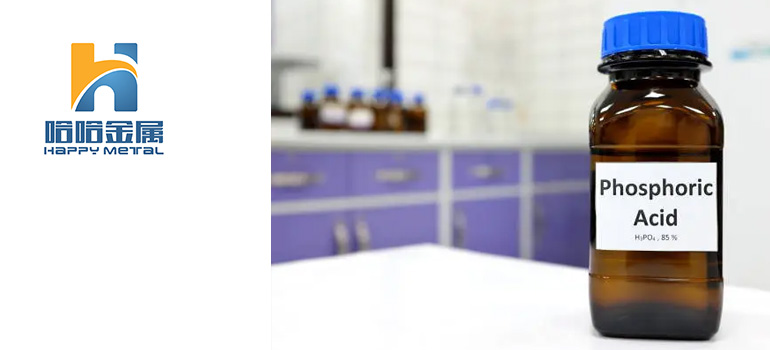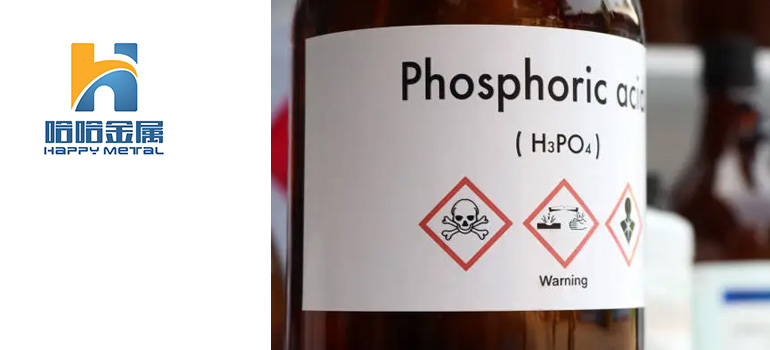Summary:
Phosphoric Acid as a Food Additive: Benefits, Risks, and Common Uses
What is Phosphoric Acid?
How is Phosphoric Acid Used in Food Products
Benefits of Phosphoric Acid as a Food Additive
Risks and Safety Considerations of Phosphoric Acid in Food
Common Uses of Phosphoric Acid in the Food Industry
Alternatives to Phosphoric Acid as a Food Additive
What is Phosphoric Acid?
Phosphoric acid is a clear, colorless liquid with a slightly acidic taste. It’s a mineral acid that is commonly used in various industrial applications, but its role as a food additive is particularly noteworthy. In the food industry, phosphoric acid is utilized primarily for its ability to acidify products, enhancing flavor and acting as a preservative. It’s a key component in many foods and beverages, especially those that require a tangy or sharp taste.
How is Phosphoric Acid Used in Food Products?
Acidification and pH Control
Phosphoric acid is widely used in the food industry for its ability to lower the pH of products. This acidification is crucial for several reasons. By reducing the pH, phosphoric acid creates an environment that is less hospitable to bacteria and molds, which helps to extend the shelf life of food products. This is particularly important in products like sodas and canned foods, where long shelf life is desired. The lowered pH also helps to maintain the desired texture and consistency of the product, ensuring it remains fresh and stable throughout its storage period.
Flavor Enhancement
Phosphoric acid plays a significant role in flavor enhancement. In beverages, especially in colas and other carbonated drinks, it provides a distinctive tangy taste that complements the sweetness of the sugar or high fructose corn syrup used. This tartness balances the overall flavor profile, making the drink more refreshing and appealing to the palate. In some foods, phosphoric acid is used to achieve a similar balance of flavors, adding a subtle sour note that can enhance the overall taste experience.
Preservation and Stability
Another key use of phosphoric acid in food products is as a preservative. By lowering the pH, it helps to inhibit the growth of spoilage organisms and pathogenic bacteria, which can otherwise lead to food spoilage or safety issues. This preservative effect is particularly useful in processed foods and beverages, where maintaining freshness and safety over extended periods is essential. In addition to its preservative properties, phosphoric acid also helps to stabilize the color and texture of products, ensuring they remain visually appealing and maintain their intended quality.
Processing and Texture Modification
In some cases, phosphoric acid is used during the processing of foods to modify their texture. For example, in baking, it can interact with other ingredients to affect the dough’s consistency, helping to achieve the desired crumb structure in baked goods. Its role in texture modification can also be seen in dairy products and certain processed meats, where it helps to retain moisture and improve the final product’s mouthfeel.
Nutritional Fortification
Phosphoric acid is sometimes used in food products to add phosphate, a vital nutrient that supports bone health and other bodily functions. By incorporating phosphoric acid, food manufacturers can fortify products with additional phosphates, which can be beneficial in diets that may be lacking in this essential mineral. However, it is important to balance its use to ensure it does not exceed recommended dietary limits.
Benefits of Phosphoric Acid as a Food Additive
Enhancing Flavor and Acidity
One of the primary benefits of phosphoric acid in food products is its ability to enhance flavor through acidification. By lowering the pH level, phosphoric acid introduces a tangy taste that balances the sweetness of many foods and beverages. This is especially evident in carbonated drinks like colas, where the acidity complements the sweetness of high fructose corn syrup or sugar, creating a refreshing and enjoyable flavor profile. The tartness provided by phosphoric acid can also enhance the overall taste experience, making it more complex and satisfying.
Extending Shelf Life and Preservation
Phosphoric acid plays a crucial role in extending the shelf life of food products. Its acidifying effect helps to inhibit the growth of bacteria, molds, and yeast that can cause spoilage. This preservation quality is particularly beneficial in processed foods and beverages, where maintaining freshness over time is essential. For instance, in soft drinks and canned goods, phosphoric acid helps to ensure that the product remains safe and palatable for an extended period. By preventing spoilage, it reduces food waste and ensures that products remain consumable for longer.
Stabilizing Product Texture
In addition to its flavor and preservation benefits, phosphoric acid contributes to the stability of food textures. By lowering the pH, it helps to maintain the desired consistency and prevent unwanted changes in texture. This is important in a variety of food products, from baked goods to processed meats and dairy products. For example, in baking, phosphoric acid can interact with leavening agents to produce the desired rise and crumb structure. In dairy products, it helps to retain moisture and prevent separation, ensuring a smooth and consistent texture.
Facilitating Food Processing
Phosphoric acid can also improve the efficiency and quality of food processing. In many manufacturing processes, controlling pH is essential for achieving the desired results. Phosphoric acid helps to create the optimal pH environment for various food processes, such as fermentation and cooking, ensuring that these processes proceed correctly. This contributes to better control over the final product’s quality and consistency, making phosphoric acid a valuable tool in food production.
Nutritional Benefits
Phosphoric acid provides a source of phosphates, which are essential for several bodily functions, including bone health, energy production, and cellular function. By fortifying foods with phosphoric acid, manufacturers can help increase dietary phosphate intake, which can be beneficial for those who might not get enough from their diet. However, it’s important for consumers to be mindful of their overall phosphate intake to avoid potential health issues related to excessive consumption.
Risks and Safety Considerations of Phosphoric Acid in Food

Potential Health Risks
While phosphoric acid is generally recognized as safe when used within regulated limits, excessive consumption can pose health risks. One of the primary concerns is its potential effect on bone health. High levels of phosphoric acid, especially when consumed in large quantities from soda and other processed foods, may contribute to an imbalance in calcium and phosphorus levels in the body. This imbalance can potentially lead to bone density loss or osteoporosis over time.
Another health concern is related to dental health. The acidity of phosphoric acid can erode tooth enamel, increasing the risk of cavities and tooth sensitivity. This is particularly relevant for individuals who frequently consume carbonated beverages containing phosphoric acid, as prolonged exposure can have detrimental effects on oral health.
Regulatory Standards and Safety Guidelines
Phosphoric acid is subject to strict regulations by food safety authorities to ensure its safe use in food products. In the United States, for example, the Food and Drug Administration (FDA) classifies phosphoric acid as a Generally Recognized as Safe (GRAS) substance when used in accordance with established guidelines. The European Food Safety Authority (EFSA) also sets limits on the allowable concentration of phosphoric acid in food and beverages to ensure consumer safety.
These regulatory standards are designed to prevent excessive exposure and to ensure that phosphoric acid is used in a way that does not pose significant health risks. Manufacturers must adhere to these guidelines and conduct regular testing to ensure that their products remain within safe limits.
Comparing Phosphoric Acid to Other Food Additives
When assessing the safety of phosphoric acid, it is useful to compare it to other commonly used food additives. While phosphoric acid has its risks, it is often considered safer compared to some other acidic additives due to its well-established safety profile and controlled usage levels. However, it is important for consumers to be aware of all additives in their diet and understand their potential impacts.
For example, some other food acids like citric acid and malic acid can also contribute to acidity-related issues, but they are used in different contexts and may have different safety profiles. Understanding the relative risks and benefits of various food additives can help consumers make informed choices about their diets.
Moderation and Dietary Balance
To mitigate potential risks associated with phosphoric acid, moderation is key. It is advisable to limit the intake of foods and beverages high in phosphoric acid, particularly those with added sugars and high acidity, such as sodas and some processed foods. Maintaining a balanced diet with a variety of whole foods can help reduce reliance on processed products that may contain high levels of phosphoric acid.
Additionally, paying attention to overall dietary patterns and ensuring adequate intake of essential nutrients like calcium can help counteract potential negative effects. A diet rich in fruits, vegetables, and whole grains, along with proper hydration, supports overall health and helps maintain the balance of nutrients in the body.
Specific Populations and Sensitivities
Certain individuals may be more sensitive to the effects of phosphoric acid, including those with preexisting health conditions or dietary restrictions. For example, individuals with kidney issues may need to be cautious about their phosphorus intake, as excessive phosphorus can exacerbate kidney problems. Similarly, people with gastrointestinal issues might experience discomfort from acidic foods and beverages.
It is important for these individuals to consult with healthcare professionals to understand their specific dietary needs and to make informed choices about their consumption of phosphoric acid-containing products.
Common Uses of Phosphoric Acid in the Food Industry
Carbonated Beverages
Phosphoric acid is most famously used in carbonated beverages, particularly in colas and other soft drinks. Its primary role here is to provide the distinctive tangy flavor that balances the sweetness of high fructose corn syrup or sugar. This acidity not only enhances the taste but also helps in maintaining the stability and carbonation of the drink. The tangy profile created by phosphoric acid contributes to the overall refreshment experience, making it a popular ingredient in a variety of fizzy drinks.
Processed Foods
In processed foods, phosphoric acid serves multiple functions. One of its key roles is as a preservative. By lowering the pH of the food product, it helps inhibit the growth of spoilage microorganisms, extending the shelf life and maintaining the quality of processed foods. This makes it a valuable additive in canned foods, sauces, and dressings. Additionally, phosphoric acid can be used to adjust the acidity of foods, enhancing flavors and stabilizing textures.
Baked Goods
In the baking industry, phosphoric acid is used in conjunction with baking powders and other leavening agents. It helps control the pH level in doughs and batters, which is essential for proper leavening and achieving the desired texture in baked goods. By reacting with baking soda or other alkaline substances, phosphoric acid contributes to the leavening process, resulting in a light and fluffy texture in products like cakes, muffins, and cookies.
Dairy Products
Phosphoric acid is also used in the dairy industry to adjust the acidity and improve the consistency of dairy products. For example, in processed cheese and cheese spreads, phosphoric acid helps to maintain the desired texture and prevent separation. It can also be used to adjust the pH of dairy beverages, ensuring stability and enhancing flavor. By stabilizing these products, phosphoric acid helps ensure they retain their quality throughout their shelf life.
Food Additive in Sauces and Condiments
In sauces and condiments, phosphoric acid is used to adjust acidity and improve flavor. It helps to balance the taste profiles of products such as ketchup, mustard, and salad dressings. The acid contributes a tangy note that complements other ingredients, enhancing the overall flavor experience. Additionally, phosphoric acid helps to preserve the freshness and extend the shelf life of these condiments, ensuring they remain safe and tasty for longer periods.
Nutritional Fortification
In some cases, phosphoric acid is used to fortify foods with additional phosphorus, an essential mineral important for bone health and other bodily functions. By incorporating phosphoric acid into certain food products, manufacturers can help increase the dietary intake of phosphorus, which can be beneficial for individuals with specific nutritional needs. This fortification helps in addressing potential dietary deficiencies and supporting overall health.
Acidulant in Beverages
Apart from carbonated drinks, phosphoric acid is used as an acidulant in a range of beverages. It helps in adjusting the acidity levels of fruit juices, energy drinks, and flavored waters. The addition of phosphoric acid not only impacts the flavor but also aids in maintaining the product’s stability and freshness. Its role as an acidulant ensures that beverages remain palatable and retain their desired taste throughout their shelf life.
Alternatives to Phosphoric Acid as a Food Additive
Citric Acid
Citric acid is a popular alternative to phosphoric acid, particularly for its role as an acidulant and flavor enhancer. Naturally occurring in citrus fruits like lemons and oranges, citric acid is widely used in beverages, candies, and processed foods. It provides a tart taste and helps in controlling pH levels, much like phosphoric acid. Additionally, citric acid has strong chelating properties, which means it can bind with metals and improve the stability of food products.
Malic Acid
Malic acid, another organic acid, is found in apples and other fruits. It is used in a variety of food products, including candies, beverages, and baked goods, to add a tart flavor and adjust acidity levels. Malic acid is known for its milder tartness compared to phosphoric acid, making it a suitable choice for products where a subtler sour note is desired. It also contributes to the overall freshness and flavor complexity of foods and drinks.
Lactic Acid
Lactic acid is used in foods and beverages for its acidifying and preservative properties. Produced through the fermentation of carbohydrates, lactic acid is commonly found in dairy products, pickled vegetables, and fermented foods. It provides a mild tangy flavor and helps in extending shelf life by inhibiting microbial growth. Lactic acid’s natural origin and milder acidity make it a favored alternative in certain applications.
Tartaric Acid
Tartaric acid is another alternative, particularly used in baking and confectionery. It is naturally present in grapes and is commonly used as a stabilizing agent in cream of tartar, which is often added to baking powders and egg whites to improve texture. Tartaric acid contributes to the leavening process and can enhance the stability and consistency of baked goods, making it a useful substitute in certain applications where phosphoric acid might otherwise be used.
Acetic Acid
Acetic acid, the main component of vinegar, is utilized for its acidity and flavor-enhancing properties. It is frequently used in pickling, sauces, and condiments to provide a distinctive sour taste and preserve food. The acetic acid in vinegar can help lower pH levels and inhibit microbial growth, similar to phosphoric acid. It’s a versatile alternative that is often preferred for its natural origin and additional culinary uses.
Ascorbic Acid
Ascorbic acid, commonly known as Vitamin C, is used as an acidulant and antioxidant in a variety of food products. It helps to preserve color and flavor while contributing to the overall nutritional value of the food. Ascorbic acid is particularly useful in fruit juices and processed foods where it acts to stabilize vitamin content and enhance flavor. Its additional health benefits make it an attractive alternative in certain food applications.
Sodium Citrate
Sodium citrate, the sodium salt of citric acid, is used to regulate acidity and improve the texture of processed foods. It acts as a buffering agent, helping to maintain a stable pH and enhance the quality of products such as cheeses, beverages, and jams. Sodium citrate is particularly useful in situations where precise control over acidity is required, making it a viable alternative to phosphoric acid in various food processing contexts.
Calcium Carbonate
Calcium carbonate can be used as a leavening agent and acidity regulator in baking and processed foods. While its primary role is to provide a source of calcium, it also helps to adjust pH levels and stabilize the texture of products. Calcium carbonate is particularly useful in baked goods and dairy products, where it contributes to both nutritional enrichment and product quality.
Organic Acid Blends
In some cases, blends of organic acids, such as citric, malic, and lactic acids, are used to achieve a desired balance of acidity and flavor. These blends can offer a more complex taste profile and provide various functional benefits, such as improved shelf life and flavor stability. By combining different organic acids, manufacturers can tailor the properties of the additive to suit specific product requirements.




